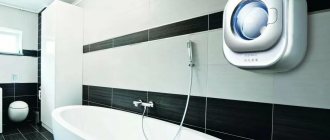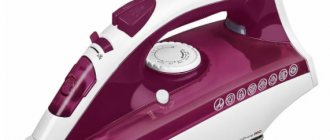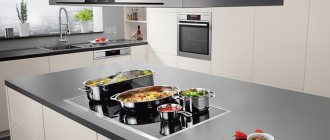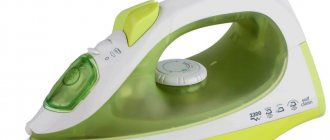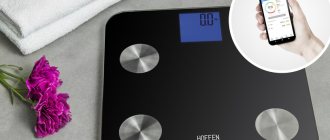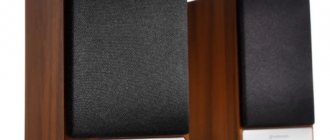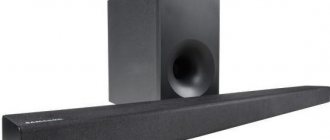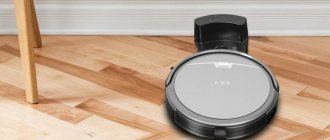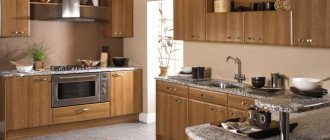There are two short periods in the year when apartment owners truly envy the owners of private houses: the transition of summer to winter and winter to summer. This is when the central heating is not yet on or has already been turned off. Private owners solve the problem simply: turn on the “warm floor” or boiler and forget about the cold night outside. But owners of living space in high-rise buildings have to buy additional electrical appliances for heating. There are several types of them: they differ in type and principle of operation. What to choose is a big question that many consumers are not well versed in.
The editors of the StroyGuru website decided to help. To do this, I have prepared a series of articles about different types of heaters. We decided to start with quartz devices. The reason is the emergence of a new generation quartz heater: it uses carbon instead of tungsten filament. The new product deserves the closest attention - according to experts, it is the future.
What is a quartz heater
In life, sometimes there are cases when completely different objects or devices are hidden under one name. This is also observed when using the term “quartz heater”. Here two devices are combined in terms of design, basic rules of installation and operation, completely different from each other. They have only one thing in common - the method of heat transfer: infrared radiation. But even here there are some differences: wavelength, surface temperature and the presence of an additional method of heating the room in one of the devices: convection.
The presence of the definition “quartz” in the name was obtained according to different evaluation criteria. In one case, the adjective “quartz” came into its name because of the transparent quartz tubes in which a spiral of wire is placed (such heaters are sometimes called reflectors) emitting infrared rays. The remaining elements of the device are designed for mounting it on a wall or ceiling and reflecting, after focusing, IR waves in a given direction.
In the second, a monolithic panel is made of quartz, performing two functions at once:
- accumulates heat (heats up), which allows you to maintain a comfortable temperature for a long time when the device is turned off;
- transmits infrared rays that heat the hard surfaces in the room, and through them the entire room.
The presence of different “origins” in the name of the heater requires separate consideration of each type of heating device.
Infrared heaters
In Europe, the most popular are UFO heaters, which in Russia are known as infrared quartz heaters. Their features are light weight, mobility, the ability to be placed on walls and ceilings, and low energy consumption.
Structure. An infrared heater made of quartz sand consists of filaments made of tungsten, nichrome, and, more recently, carbon, enclosed in flasks made of quartz (SiO2 - silicon dioxide). The tubes can be filled with inert gas (mostly inert gas) or quartz sand, depending on the type of heating element.
All this is placed in a steel case with a reflector (the structure of the heater can be seen in detail in the photo below). Brackets are screwed or soldered on the back wall, allowing you to hang the device on the wall or ceiling anywhere. The main thing here is to be able to connect to the power supply (there is an outlet nearby or an extension cord is on hand).
Principle of operation. All types of quartz heaters use the ability of quartz to transmit infrared rays. Therefore, a wire made of tungsten or nichrome (spiral) is placed inside a quartz tube, and, more recently, a wire made of carbon (strip) - in the open air, the spirals quickly burn out.
When heated to a certain temperature, the wire insert begins to induce a magnetic field (about 2% of the energy is lost to it) and emit heat waves in the infrared spectrum (can be of different lengths, depending on the heating temperature). Here physicists can reproach that the essence of the device’s operation is not entirely accurately stated. The answer is simple: there is no point in delving into the jungle of theory - a site visitor should only have an idea of the principles of operation of the device.
IR waves are emitted evenly by the heated element of the tube in all directions. However, what is the point of heating a wall or ceiling? Therefore, a reflector in the form of a concave mirror is placed behind the spirals, redirecting the wave flow towards the room with a small dispersion angle (this is how the focus of the mirror is calculated).
A feature of such devices is the transfer of heat not by air, as, for example, in oil radiators, but by waves. Heating occurs similarly to the sun's rays: the floor, furniture, sections of the wall, and other objects heat up in the radiation zone. As a result, the efficiency of the device itself is about 87-95% (not to be confused with the efficiency of converting electrical energy into heat, where 98%) due to the fact that the ceiling and ceiling space are not heated in vain.
The device operates according to the following algorithm:
- after switching on, the coil becomes hot;
- infrared radiation is directed in one direction: in front of the device (this is helped by a reflector at the back of the bulb);
- all objects within the reach of IR rays heat up;
- the air, in turn, warms up from the irradiated floors, walls, furniture, and various objects;
- when the set temperature in the room is reached, the thermostat turns off the device;
- When the temperature drops, the heater turns on again.
The operating principle of a quartz IR heater.
The advantages of IR heaters are clearly shown by the diagram below for heating a room using a central heating radiator and a wall-mounted IR device. As you can see, to obtain comfortable conditions for a person to stay in a room, you need to strongly warm the ceiling and ceiling space. And this means a decrease in the efficiency of the heating system.
Scheme of convective and infrared heating of a room.
A huge plus is that there are no convection heat flows of air, and, consequently, dust and the smallest living organisms. The downside is that nothing will heat up behind the barrier. There are other pros and cons of quartz heaters of this family, which we will consider in more detail below.
Monolithic
A distinctive feature of monolithic quartz heaters is the combination of two types of heating: convection and infrared. This possibility is due to the structure of the device.
Structure. The device consists of a heating element hermetically sealed in a quartz plate, a metal case (not always) and a reflective screen (attached to the wall behind the panel, not included in the package, but purchased separately). The design is simple, non-separable. The tightness ensures that the spiral operates without access to air, and with it oxygen.
The latter is the enemy of the spiral. It begins to oxidize, as a result of which it quickly burns out. Therefore, it is very important to handle this type of heater with care. After all, the slightest damage to the fragile quartz case shortens the life of the device. In theory, without access to oxygen, the heating element can operate indefinitely.
The disadvantage is the lack of a thermostat. Manufacturers do not deliberately install it - it will read the temperature of the case, but they provide the possibility of connecting it upon purchase. This point is reflected in the instructions - it describes in detail how to make the connection. The presence of built-in climate control allows you to get an economical heating device.
Principle of operation. Monolithic quartz heaters are based on two ideas: using IR rays to heat the room and the desire to maintain a comfortable temperature in the room for a long time after switching off. The result is a device that uses two heating methods: wave and convection.
The device operates as follows:
- after switching on, the coil quickly heats up and begins to emit infrared waves;
- passing through quartz, the rays give off part of the energy to the panel, causing it to heat up;
- walls, ceiling, floor and furniture begin to slowly warm up;
- after about 20 minutes, the stove reaches a temperature of +95oC, after which it begins to heat the air around it;
- warm air currents begin to rise upward (a quartz radiator is obtained). The convection heating method begins to work;
- after heating the panel, infrared radiation passes through the quartz plates with virtually no loss of power - the laws of physics do not allow the wall material to be heated above +95oC;
- all surfaces within the reach of IR waves heat up;
- the air, in turn, warms up from the warm floor, walls, furniture, and various objects;
- After turning off the device, it cools down for a long time, working like a central heating radiator.
Types and principle of operation
A quartz heater can be monolithic or infrared.
Monolithic (MKTEN)
It is a slab made of quartz sand solution with a nichrome spiral installed inside. After connecting to the power supply, the spiral heats up and transfers heat to the base plate. Quartz has a high heat capacity, so even after turning off the device, the air in the room will continue to heat up for some time. Such products take the form of a flat (about 25-30 mm) panel, which is either attached to the wall using special brackets or equipped with a stand for installation on the floor.
The device is valued by consumers for the following advantages:
- You can paint it any color - this procedure is provided by the manufacturer.
- The heating element is protected from contact with air and therefore does not oxidize, which ensures a long service life.
- If the device falls and depressurization occurs, there will be no leakage of toxic substances.
- The heat reserve lasts about 1.5 hours, and the device can cool down for up to 5 hours, depending on the specific model.
- The presence of a temperature sensor.
- Fireproof.
- There is no risk of short circuit.
- Minimum probability of spiral burnout, thereby increasing service life.
- Moisture-proof heating element - can be mounted in the kitchen and even in the bathroom.
- Maximum heating of the stove is achieved within 20 minutes after being plugged in.
But the device is not without its drawbacks:
- Difficult to move from one place to another.
- Heavy weight (up to 13 kg) – complexity of installation and limited number of places where installation is possible (plasterboard, for example, will not withstand such loads).
- The surface heats up to 80-120 °C, you can get burned.
- In homes with children and animals, installation is possible only with a protective screen.
Infrared
The device works by heating a spiral made of tungsten, nichrome or carbon, which is placed in a quartz tube. This type of heater produces electromagnetic radiation in the infrared range. Surfaces in the room absorb energy, heat up and release heat to the air.
The principle of heating through infrared radiation is more productive than convection: only the “useful” area is heated, energy is not wasted on unused ceiling space.
The infrared quartz heater has the following advantages:
- The light weight allows you to install the product yourself, even on the ceiling.
- Fire safety.
- Silence.
- Inertia.
- Environmentally friendly.
- Can be stationary or portable.
- Thermostat and remote control function.
- Possibility to heat only part of the room.
But it also has disadvantages:
- The tube heats up strongly during operation of the device - up to 700 ° C, and dust settling on it emits an unpleasant odor.
- The instability of a quartz tube to changes in temperature and humidity quickly loses its technical characteristics when working in difficult conditions.
Expert opinion
Kuznetsov Vasily Stepanovich
Manufacturers mitigate the shortcomings of the infrared device by producing models with a heating element mounted in an anodized profile. This device is fireproof. There is a small minus - slight crackling during operation.
Carbon-quartz heater
The innovative carbon-quartz heater that went on sale is similar in structure and operating principle to a monolithic panel. The difference is in the heating element - it is made of carbon fiber. A special feature of this material is its unlimited operating time even with a cracked case - oxidation processes leading to burnout of carbon fibers proceed several orders of magnitude slower than with metal wire.
Characteristics. The technical characteristics of each heating device are individual. Therefore, we present average data for all types of heaters, and we will show individual data when considering a specific model in the “Model Rating” section:
- power - 0.4-5.0 kW;
- efficiency factor (efficiency) - more than 90%;
- weight - 1.55-25.0 kg;
- heating area - 8-45 m2;
- filament temperature - 250-1200oC;
- class of protection against electric shock - 1;
- housing protection class - IP 20;
- dimensions: length - 480-1450 mm; height - 45-535 mm; thickness - 25-275 mm.
Specifications
Some unscrupulous manufacturers are disingenuous and talk about the variety of different characteristics of monolithic heaters. In fact, this is not the case; according to experts, the main technical data of the devices fluctuate around the same values.
- Electricity consumption is 0.2-0.4 kW/h, which is very economical, especially since up to 99% of it is converted into heat.
- The maximum heating temperature of the stove is up to 98 degrees.
- High heating rate of the monolith - in 20 minutes it is able to raise its own temperature from 10 to 95 degrees.
- Long cooling - 1 degree every 2 minutes at room temperature.
- Weight ranges from 10 to 15 kg.
Manufacturers also calculated the comfortable dimensions of the heater for carrying and operation - 60/30/2.5 cm.
The main differences between manufacturers lie in the composition of the monolith and manufacturing technology, which directly affects the durability of the heater. A quality product must have a quality certificate. cares about its reputation, so in the box, in addition to the heater itself, the power cord, plug and mounting the device to the wall, a document confirming the quality of the product is included.
The standard equipment is equipped with special fasteners so that the quartz monolithic heater can be installed suspended from the wall. Although floor installation of the device on a special stand is allowed, which ensures a stable position of the equipment, it must be purchased separately.
Pros and cons of a quartz heater
Quartz heaters have many strengths :
- reasonable cost - the device is accessible to almost any wallet: prices range from 518 rubles. up to RUB 48,900;
- high efficiency of electricity use. Manufacturers claim 99%. Anyone who knows physics well will agree. In practice, 95-98%, because part of the electrical energy is spent on the resistance of the supply wiring (the higher the power of the device, the more it heats up), on magnetic induction and visible light waves;
- reliability - a simple design allows you to operate the device without repairs for the entire allotted service life. The failure rate of heaters is minimal and is due to manufacturing defects, which we will discuss below (if they fail, it is easier to buy a new one than to repair the old one);
- compactness - do not take up much space;
- mobility - the heater can be moved from one room to another without any problems. For example, first warm up the nursery and then the bedroom;
- quick heating of the room;
- no human presence required during operation;
- simple yet safe operation.
A complete list of the advantages of this type of heating devices is given. However, in many sources (popular articles, manuals and manufacturer’s instructions), the pros and cons of quartz heaters are greatly distorted. Advertising moves include the following statements:
- durability. What is meant by this is not clear. After all, there is no basis for comparison. The author was unable to find the specific service life of the device (most manufacturers issue a 5-year warranty, official websites claim 20-30 years), which can be believed when there are specific statistics. If readers have data obtained during operation of the device, please share it in the comments;
- oxygen is not burned. And this marketing ploy is designed for people who have forgotten their school lessons in chemistry and physics - when heating spirals, threads and plates, oxygen is not involved: it is needed for the chemical reaction of the combustion process;
- no noise during operation. Another advertising ploy is that only the fan can make noise. The devices themselves, regardless of type and type, cannot emit sound waves. Sometimes a slight crackling sound is heard - the IR devices are at fault;
- infrared radiation (related to heat rays) kills germs - complete nonsense. Disinfection of the room and objects in it is carried out with ultraviolet rays, not heat;
- the use of quartz heaters does not dry the air in the room, which is completely untrue - any heating device dries the air;
- the absence of odors is another, albeit unsuccessful, move by marketers. There are odors and they are associated with the burning of dust on the flasks of the heaters if it is not wiped off in advance, which is, in principle, unrealistic - do not remove the protective grille every day to wipe the flasks;
- infrared rays are safe for humans, while forgetting about the microwave in which the chicken is fried. True, here the harm to humans is minimal, due to the low level of radiation - the main flow of rays is absorbed by clothing. But doctors do not recommend walking around the room with a working quartz heater in a semi-naked state - the skin will “cook” in places facing the source of infrared rays. This happens according to the following algorithm: the body heats up and quickly releases moisture. The body is not able to restore the water balance of the irradiated surface at the same speed. The result is burns. There are many reviews about this effect on various forums. By the way, this is why the portal team does not recommend visiting infrared saunas.
Among the disadvantages it should be noted:
- fragility. This problem can be encountered already at the stage of transporting the device from the retail chain to home - you are afraid of impacts, direct or received as a result of a fall. The performance will remain the same - only a network of small cracks will appear, but the service life will be sharply reduced;
- high surface temperature - installation of special screens in the form of a lattice is required to prevent children and pets from direct contact with the heated surface;
- lack of a thermostat - you will have to constantly turn the device on and off. If you wish, you can buy a thermostat yourself, but you will have to install it yourself.
Principle of operation
The product will not function if any component is missing. Only the totality of all the details gives a useful working effect. As already mentioned, the principle of operation of the heater is to convert electrical energy into a thermal effect.
At the same time, the quality and performance of the product is such that breakdowns are simply excluded. There are no weak links among the component parts, there is simply nothing to break. All possible malfunctions may be due to errors during assembly or poor quality of workmanship. Belorusskaya vouches for each of its heaters and gives a 2-year warranty with an unlimited service life. But it is still necessary to know the classification of breakdowns, as this relates to the principle of operation.
Possible malfunctions:
- Burnt conductive cable or terminal clamp . The problem is most likely due to a short circuit to the body of the heat exchange chamber. This happens when the coolant touches the chamber at one end. In this case, replacing the cable will not help; you need to change the thermal agent and the chamber. The stove remains.
- When the heater is turned on, the circuit breaker blows. The essence of the malfunction is caused by similar reasons, but to them you can add a break in one or more conductor cable cores.
- Prolonged heating or limited heating . It happens that the temperature rises for a very long time or does not rise above a specific value, for example 45 ° C. The cause of the malfunction is partial damage to the nichrome media or a malfunction of the thermal regulator (if installed).
- The stove began to “flicker” . This situation is rare, but it does happen. Occurs when the media is burnt due to a breakdown in the electrical network, and it is periodically shorted to the exchanger chamber. In this case, sparking may occur inside the ceramic plate, and flickering may occur.
It should be noted that these faults were identified over a long period of testing of various brands of quartz heaters. The Belarusian brand “Teplopitbel” turned out to be the flagship of the tests and showed only 2 failures per 1000 products, and not during operation, but at launch. That is, a typical factory assembly defect, and not a lack of quality of the finished product.
Which one is better to choose and in what case
The presence of two heating devices with different structures makes it difficult to choose. Experts advise in this case to adhere to the following recommendations:
- Panels are better suited for constant heating of small rooms. But in this case, a thermostat is required. In its absence, the owners will face two surprises: high energy consumption and a home sauna when it gets warm outside;
- The room warms up faster with reflectors. Therefore, it is better to buy UFO heaters for the dacha in the autumn-winter season;
- open and semi-open spaces (veranda, gazebo) will be heated only by infrared devices;
- if you need to heat several rooms in an apartment or house with one device, infrared heaters are better suited - they are more mobile;
- you can quickly warm up a room or wall (instead of a heat gun) only using the wave method (“Ballu” BIH-LM-1.5);
- Regardless of what the manufacturer says, quartz heaters can only be used effectively in small rooms (up to 8 m2). Large rooms require a cascade, which means significant energy costs;
- with poorly insulated ceilings, the quartz panel will heat the sky;
- one device is not able to create a comfortable temperature in a country house, house or apartment when the frost is more than 5oC. Here you need either several units, or other types of heating to help;
- Before purchasing, you need to determine the power of the heater. Weak appliances will not heat, and powerful ones will constantly create a stuffy atmosphere;
- Having chosen a powerful unit, be sure to check the characteristics of the electrical wiring in the house or apartment. There is a high probability of failure of the entire system or blocking of the heater by control equipment;
- If you have limited finances, it is better to buy products from domestic manufacturers - they are cheaper. But you should remember about the huge number of fakes with poor quality - Chinese manufacturers are especially guilty;
- carbon heaters are superior to analogues with other heating elements only in service life. Here you need to make a choice: pay a lot of money and look at the heating battery for about half a century (you might get tired of it), or get by with relatively little money and replace the device when the family gets tired of it.
Efficiency indicators and calculations
Energy-saving ceramic and quartz heaters are truly economical. Let's try to consider consumption based on an apartment with two rooms and a kitchen. Let's assume that we have two rooms of 20 square meters. m, and the kitchen is 7 sq. m. We will put another heater in the combined bathroom with an area of 6 square meters. m. In total, we will need the following equipment:
- Four Nikaten 500 heaters - total consumption will be 14 kW per day.
- One Nikaten 330 heater with an energy consumption of 2.3 kW per day.
- One Nikaten 300 heater with an energy consumption of 2.1 kW per day.
We will need a thermostat for each device, since the above figures are relevant only when using thermostats. The set temperature is within +22-23 degrees. In total, 18.4 kW will be consumed per day, and 552 kW in 30 days. With an average cost of 1 kW of electricity of 4.5 rubles, heating costs will amount to 2,484 rubles. In principle, this is not so much. Another part of the electricity will be spent on household needs - operating an electric kettle, microwave oven, energy-saving light bulbs and other electrical appliances.
Even taking into account electric heating with Nikaten heaters, you can easily keep your electricity costs to 3.5-4 thousand rubles. Remember that the calculations presented are valid for an apartment (or private household) with an area of 53 square meters. m. with good insulation.
Recommendations for use
Like any electrical device, quartz heaters require strict adherence to operating rules. Let's remember the main ones:
- Before connecting to the outlet, the wiring is inspected. There should be no damage to it;
- turn on and let the device heat up well (the very first turn on) - in production, even with well-known brands, it is not always possible to dry the device well. If this is not done in a timely manner, the reflector may smell unpleasant for a long time, and the panel may experience electric shock or crack;
- You can dry things only with special racks. In their absence, there is a high risk of fire;
- Monolithic batteries must be handled with care - the slab is fragile: any drops or slight impacts can lead to cracking of the quartz;
- do not use equipment with long and medium-length infrared waves in children's rooms (such a wave is emitted when the coil is heated above 400oC);
- If there are small children and pets, install protective screens.
Special grid for drying things.
Manufacturers
Both foreign and Russian manufacturers produce quartz monolithic devices. Since such heating equipment is not high-tech, there is no point in having an expensive imported device. Many domestic companies engaged in the production of MKTEN supply to the market products that, in their technical and operational characteristics, are not inferior to foreign ones. These manufacturers include: TeplEko and Teploplit.
All monolithic quartz heaters produced by these companies have certificates, and their quality and safety meet all standards.
Give preference to proven and well-established manufacturers. Because if you purchase a device from an unverified supplier, you will not be sure of the quality of the materials used.
TepplEco
The power of quartz monolithic heaters is 400 W, weight is 12 kg.
A distinctive feature of such devices is their high heat capacity. Due to the fact that very pure quartz sand is used to make the slabs, the device can remain warm for 5 hours after being turned off.
Most users connect MKTEN via a thermostat, or construct a complex heating system from such devices. In this regard, the manufacturer does not attach the plug to the wire, but offers it in the kit.
In addition to the heater, the TeplEko company also offers the Eberle RTR-E 3563 thermostat.
The cost of a quartz monolithic heater (without a thermostat) is 2,000-2,500 rubles.
Types of quartz heating systems
The design of various types of radiators includes traditional quartz, the differences affect the execution - if in infrared ones a glass tube with an electric heater is made from sand, then in monolithic ones the panel itself is made from it.
So, nowadays there are 2 types of radiators on sale:
The first are a solid panel with a thickness of 7 to 25 mm. The second is a glass tube with a heater. Both are available in both wall-mounted and floor-standing types.
Monolithic
Structurally, this is a slab made from a mixture of sand and clay and the addition of individual elements, in the middle of which a nichrome thread with increased resistance is placed in a non-flammable flask.
The plate itself is placed in a metal frame with adjustment keys.
The thermostat is not included in the set; it can be selected either as an additional option (+ to the price), or even as a separate component.
- power – 0.4-05 kW per hour;
- weight – up to 15 kg;
- temperature – up to 98°C;
- heating speed – 20-25 minutes.
In the absence of an external water thermostat, the device will work exactly as long as it is connected to the outlet. Based on this, working with a thermostat will be very convenient - when the set temperature is reached, the heating turns off, and as soon as it becomes noticeably cooler, it turns on. There are also carbon-quartz wall panels.
Infrared
These are the well-known UFOs, which have become a household name in our country. The device is quite simple - a nichrome thread is placed in one or more flasks made of sand, which heats up and the entire surface of the tube returns heat. For directional action, the back side is designed to reflect heat.
The infrared type is convenient because it makes it possible to zone the room.
The thermostat is built-in and controls how the device turns on and off. On the one hand, the operation of the “ufoshek” is convenient - it is not the air that is heated, but the objects, and they, for their part, already give off heat. On the other hand, it takes much longer to heat the room than during operation of a conventional convection device.
- power – 1.5-2 kW;
- weight – up to ten kilograms;
- temperature – up to 98°C;
- heating speed – 20-25 seconds.
Carbon-quartz
This equipment option is difficult to classify as an individual category, but rather to different types of monolithic ones, however, quartz caborons combine the properties of quartz, infrared and ceramic heating systems at once. So, for example, carbon fiber is not prone to thermal expansion, which eliminates cracking of the monolith slab. The heat transfer of a carbon filament is greater than that of a nichrome spiral with the same power used; therefore, electrical energy bills will be lower.
We've sorted out the varieties, now let's move on to the rating of good models.

